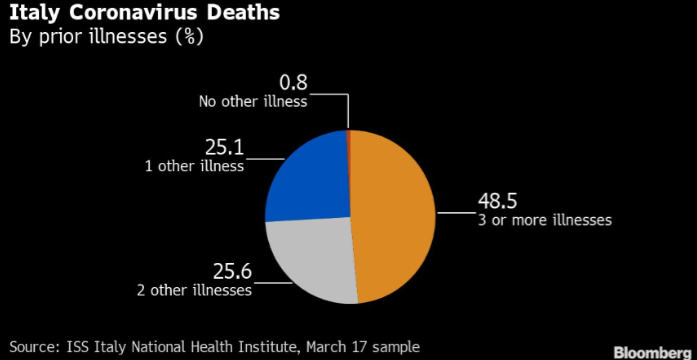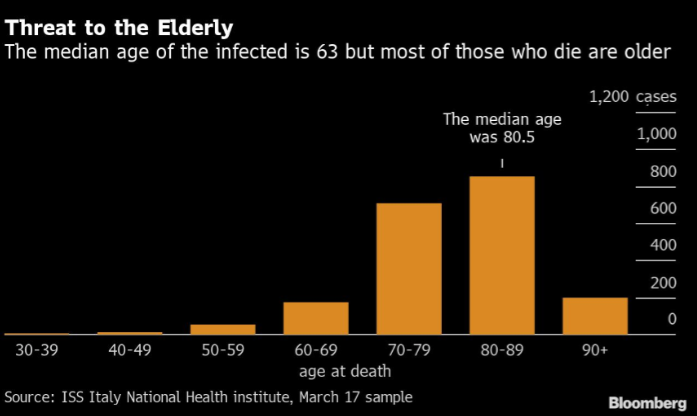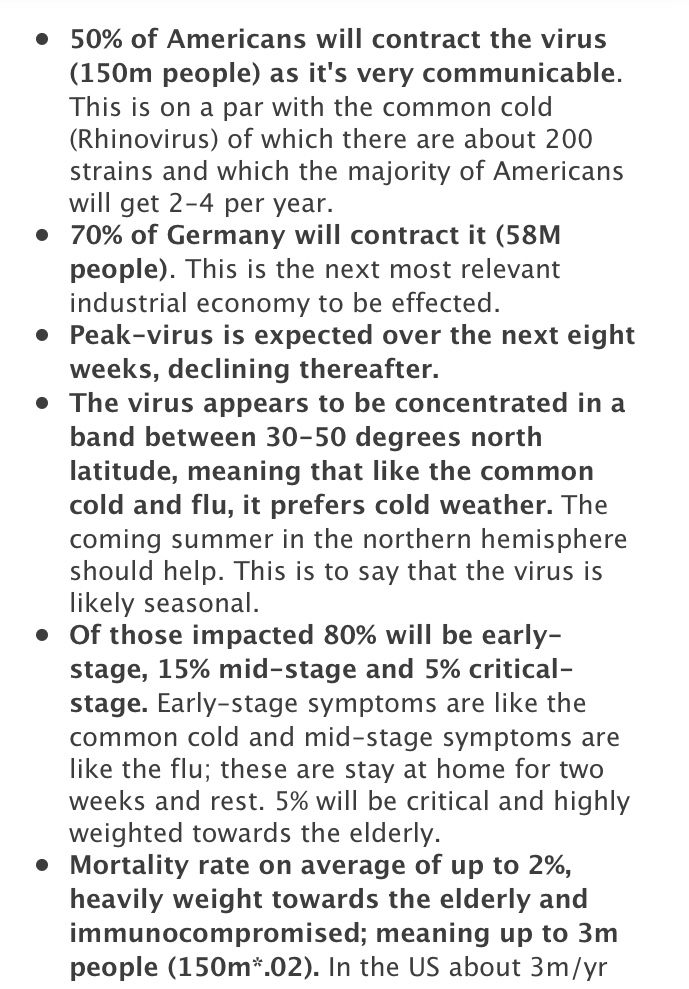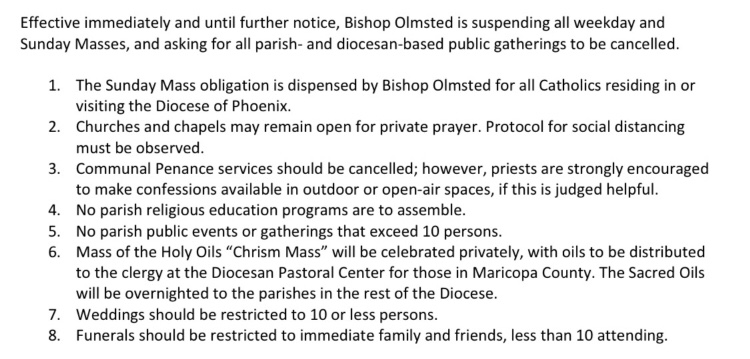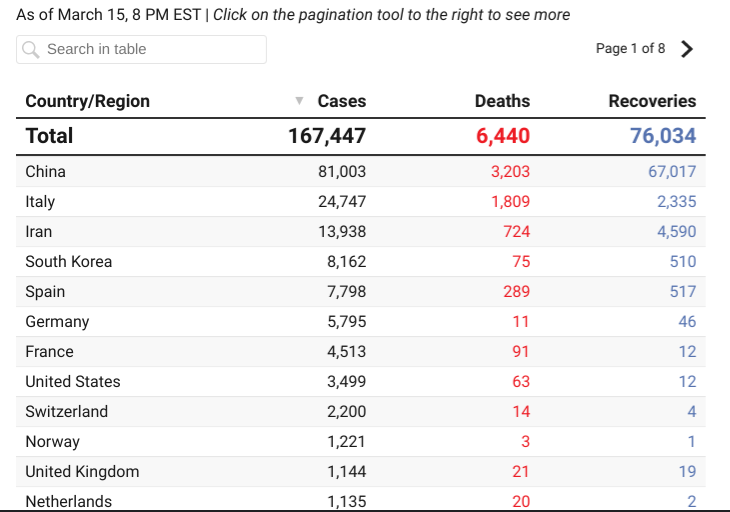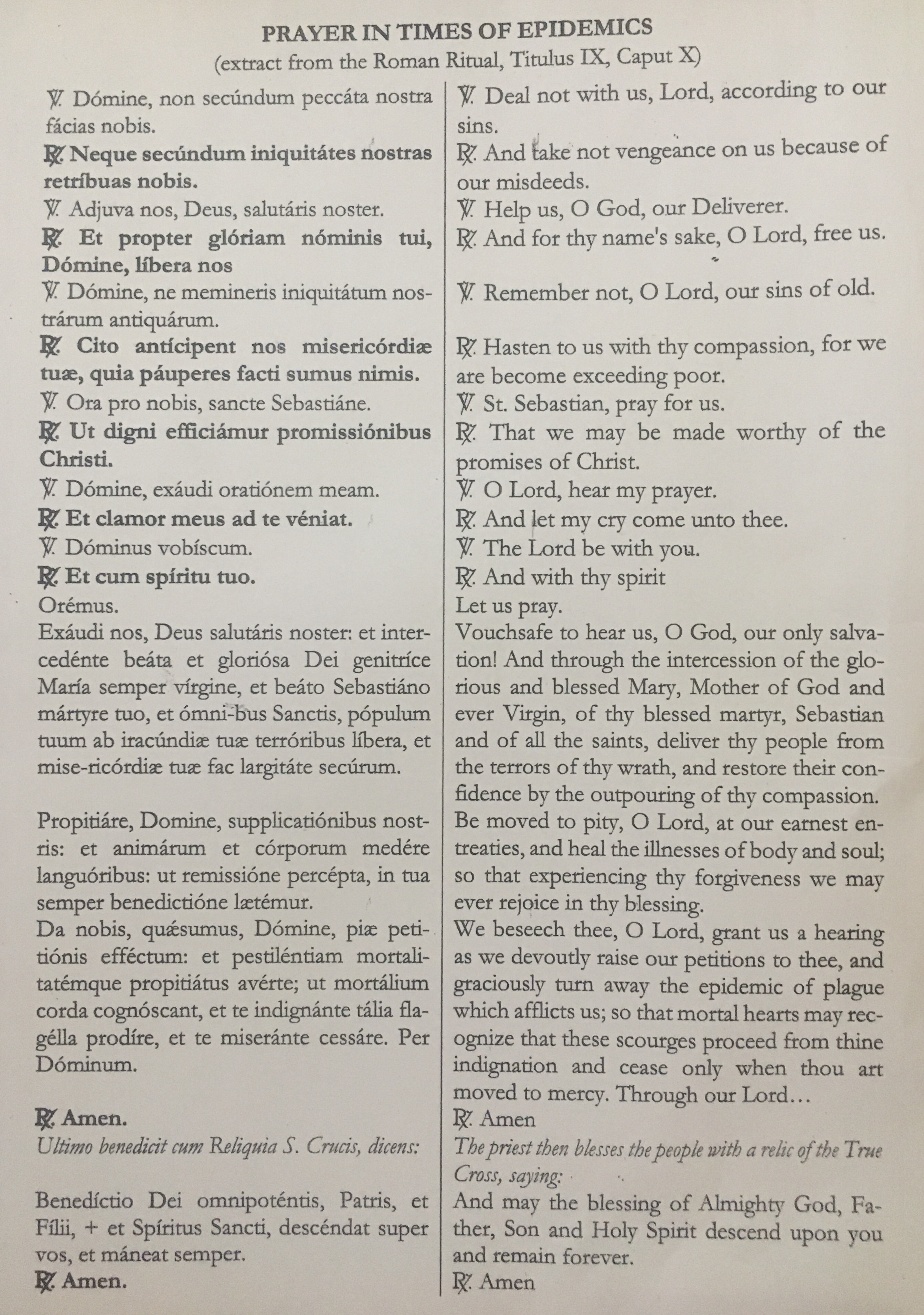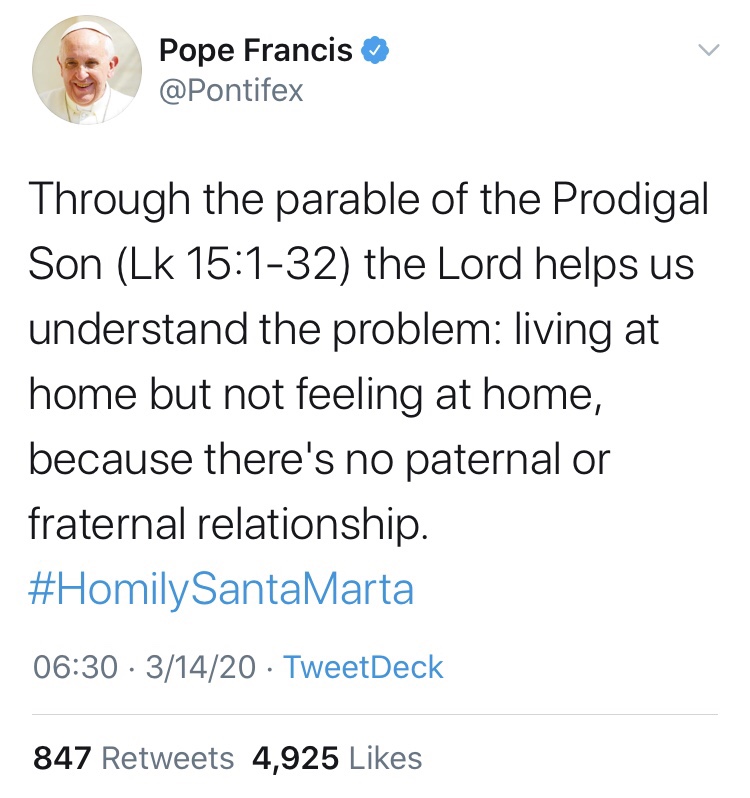I am posting here a work by Dr. Edmund J. Mazza, which first appeared yesterday at the blog of Bishop Rene Gracida. The essay is reprinted here in its entirety with permission from His Excellency and the author.
Dr. Mazza is the host of “The Bar of History” live show/podcast on VirginMostPowerfulRadio.org and his YouTube channel is “Discover Christ Channel.” He expresses his personal gratitude to Ann Barnhardt for first alerting us to the questionable resignation and to Cardinal Ratzinger’s 1977 speech, which is the primary focus of this essay and the lens through which many other things come into focus.
As a follow up, I suggest readers click over to read about a sermon delivered by Cardinal Ratzinger in 1978, wherein ++Ratzinger compared the Transfiguration of our Lord to a pope who transfigures the nature of his papacy, morphing it into a service of quiet suffering, yet while retaining the authority of the Office, allowing others to drag him where he does not wish to go, more and more allowing himself to be nailed to the cross. This sermon was referenced directly by Archbishop Ganswein during his famous speech at the Greg in May 2016, as he was explaining how Pope Benedict had created an Expanded Petrine Ministry. https://nonvenipacem.com/2019/06/24/he-has-not-abandoned-the-office-of-peter-something-which-would-have-been-entirely-impossible-for-him-after-his-irrevocable-acceptance-of-the-office/
———————–
Posted on March 7, 2020by abyssum
Resigned to the Papacy: Does Benedict still claim he is Pope?
Edmund J. Mazza, PhD
It’s a safe bet that even if seventy-three-year-old President Trump’s physical stamina suddenly caved, he would still seek re-election rather than allow his Democrat opponent to seize the oval office and reverse all his gains and policies. It is a curious question then why another incumbent Conservative, Pope Benedict XVI, resigned seven years ago citing the frailty of his eighty-five-year-old frame, certain in the knowledge that his successor would be a Leftist ideologue bent on undoing, not only his own legacy, but two thousand years of Catholic tradition. (Benedict may even have been reasonably sure that it would be Jorge Bergoglio, himself, since the Argentinian cardinal came up just shy of the votes needed to unseat Benedict back in 2005.) As George Neumayr writes in the The American Spectator:
In one of his last speeches before abdicating in 2013, Pope Benedict XVI decried the liberalism that had seeped into the Church after Vatican II. To this liberalism, he traced “so many problems, so much misery, in reality: seminaries closed, convents closed, the liturgy was trivialized.” But he then proceeded to hand the Church to the very liberals responsible for these problems and to a successor set upon liberalizing the Church even more.
The recent release of Netflix’s The Two Popes, the seventh anniversary of Benedict’s abdication and the firestorm over his co-authorship of a book advocating the retention of the celibate priesthood—a seeming slap in the face of Pope Francis—all conspire in calling for a reexamination of the infamous resignation. Indeed, ever since February 11, 2013 speculations have circulated that Benedict’s renunciation may have been invalid, that he—in some way—still retains the papacy. These allegations were fueled in part by Benedict’s own rather bizarre measures after formally stepping down, such keeping his name “Pope Benedict XVI,” his title “His Holiness,” his white cassock, imparting his “Apostolic Blessing,” and lastly—never departing the Vatican.
These claims even received an unexpected boost thanks to a speech by Benedict’s Personal Secretary, Archbishop Georg Gänswein, Prefect of the Papal Household. At Rome’s Gregorianum in 2016, Gänswein declared “he has not abandoned this ministry at all. Instead, he has complemented the personal office with a collegial and synodal dimension, as a quasi-shared ministry.” Gänswein adds: “He has not abandoned the office of Peter, a thing which would be completely impossible for him following his irrevocable acceptance of the office…”
Then in 2017, Last Testament: In His Own Words, was published in which journalist Peter Seewald conducted a lengthy interview with Benedict. At one point, Seewald pointedly asks His Holiness: “Is a slowdown in the ability to perform, reason enough to climb down from the chair of Peter?” Benedict replies:
One can of course make that accusation, but it would be a functional misunderstanding. The follower [successor] of Peter is not merely bound to a function; the office [munus] enters into your very being. In this regard, fulfilling a function is not the only criterion. (Emphasis mine)
What “misunderstanding”? A simple “yes,” would do.
But Benedict does not give a “yes” or “no” answer to this straightforward question. All the more bizarre since his answer, in fact, must be a “yes,” or otherwise he is contradicting the very reason he gave for stepping down in his official resignation speech:
“I have come to the certainty that my strengths, due to an advanced age, are no longer suited to an adequate exercise of the Petrine office [non iam aptas esse ad munus Petrinum aeque administrandum]… strength…has deteriorated in me to the extent that I have had to recognize my incapacity to adequately fulfill the ministry [ministerium] entrusted to me. For this reason…I declare that I renounce the ministry [ministerio] of Bishop of Rome, Successor of Saint Peter…”
But in his answer to Seewald, Benedict explains that a physical “slow-down” only affects the “functions” or “ministry” of a pope, his day-to-day tasks like any other official. But being Pope, Benedict insists, is not fundamentally about doing this or that, it’s about being. His answer is an ontological one: “the office [munus] enters into your very being,” not the “function” or “ministry,” but the office.
Seewald then observes: “One objection is that the papacy has been secularized by the resignation; that it is no longer a unique office but an office like any other.” Benedict replies:
I had to…consider whether or not functionalism would completely encroach on the papacy …Earlier, bishops were not allowed to resign…a number of bishops…said ‘I am a father and that I’ll stay’, because you can’t simply stop being a father; stopping is a functionalization and secularization, something from the sort of concept of public office that shouldn’t apply to a bishop. To that I must reply: even a father’s role stops. Of course a father does not stop being a father, but he is relieved of concrete responsibility. He remains a father in a deep, inward sense, in a particular relationship which has responsibility, but not with day-to-day tasks as such…If he steps down, he remains in an inner sense within the responsibility he took on, but not in the function…one comes to understand that the office [munus] of the Pope has lost none of its greatness…
Benedict again goes to great lengths to contrast the difference between I. “the office of the Pope” and II. the ministry or “function” associated with it. How to “decode” Benedict? By examining the words he has chosen and the ways he has deployed them before.
In October 1977, during the symposium “On the Nature and Commission of the Petrine Ministry” marking the 80th birthday of Pope Paul VI, Ratzinger declared:
“In keeping with the three Persons in God, the argument went, the Church must also be led by a college of three, and the members of this triumvirate, acting together, would be the pope. There was no lack of ingenious speculations that (alluding, for instance, to Soloviev’s story about the Antichrist) discovered that in this way a Roman Catholic, an Orthodox, and a Protestant together could form the papal troika. Thus it appeared that the ultimate formula for ecumenism had been found, derived immediately from theology (from the concept of God), that they had discovered a way to square the circle, whereby the papacy, the chief stumbling block for non-Catholic Christianity, would have to become the definitive vehicle for bringing about the unity of all Christians.
2. The interior basis for the primacy: Faith as responsible personal witness
“Is this, then—the reconciliation of collegiality and primacy—the answer to the question posed by our subject: the primacy of the pope and the unity of the People of God? Although we need not conclude that such reflections are entirely sterile and useless, it is plain that they are a distortion of trinitarian doctrine and an intolerably oversimplified fusion of Creed and Church polity. What is needed is a more profound approach. It seems to me that it is important, first of all, to reestablish a clearer connection between the theology of communion, which had developed from the idea of collegiality, and a theology of personality, which is no less important in interpreting the biblical facts. Not only does the communal character of the history created by God belong to the structure of the Bible, but also and equally personal responsibility. The ‘‘we’’ does not dissolve the ‘‘I’’ and ‘‘you,’’ but rather it confirms and intensifies them so as to make them almost definitive. This is evident already in the importance that a name has in the Old Testament—for God and for men. One could even say that in the Bible ‘‘name’’ takes the place of what philosophical reflection would eventually designate by the word ‘‘person…
“Martyrdom as a response to the Cross of Jesus Christ is nothing other than the ultimate confirmation of this principle of uncompromising particularity, of the named individual who is personally responsible…
“The Petrine theology of the New Testament is found along this line of reasoning, and therein it has its intrinsically necessary character. The ‘‘we’’ of the Church begins with the name of the one who in particular and as a person first uttered the profession of faith in Christ: ‘‘You are . . . the Son of the living God’’ (Mt 16:16)….
“Is Peter as a person the foundation of the Church, or is his profession of faith the foundation of the Church? The answer is: The profession of faith exists only as something for which someone is personally responsible, and hence the profession of faith is connected with the person. Conversely, the foundation is not a person regarded in a metaphysically neutral way, so to speak, but rather the person as the bearer of the profession of faith—one without the other would miss the significance of what is meant…
“The ‘‘we’’ unity of Christians, which God instituted in Christ through the Holy Spirit under the name of Jesus Christ and as a result of his witness, certified by his death and Resurrection, is in turn maintained by personal bearers of responsibility for this unity, and it is once again personified in Peter—in Peter, who receives a new name and is thus lifted up out of what is merely his own, yet precisely in a name, through which demands are made of him as a person with personal responsibility. In his new name, which transcends the historical individual, Peter becomes the institution that goes through history (for the ability to continue and continuance are included in this new appellation), yet in such a way that this institution can exist only as a person and in particular and personal responsibility…
“The English Cardinal expresses it in the same way in another passage: ‘‘The office of the papacy is a cross, indeed, the greatest of all crosses. For what can be said to pertain more to the cross and anxiety of the soul than the care and responsibility for all the Churches throughout the world?’’ Moreover, he recalls Moses, who groaned under the burden of the whole Israelite people, could no longer bear it, and yet had to bear it.34 To be bound up with the will of God, with the Word of whom he is the messenger, is the experience of being girt and led against his will of which John 21 speaks. Yet this attachment to the Word and will of God because of the Lord is what makes the sedes a cross and thus proves the Vicar to be a representative. He abides in obedience and thus in personal responsibility for Christ; professing the Lord’s death and Resurrection is his whole commission and personal responsibility, in which the common profession of the Church is depicted as personally ‘‘binding’’ through the one who is bound . . . . This personal liability, which forms the heart of the doctrine of papal primacy, is therefore not opposed to the theology of the Cross or contrary to humilitas christiana but rather follows from it and is the point of its utmost concreteness and, at the same time, the public contradiction of the claim that the power of the world is the only power and also the establishment of the power of obedience in opposition to worldly power. Vicarius Christi is a title most profoundly rooted in the theology of the Cross and thus an interpretation of Matthew 16:16–19 and John 21:15–19 that points to the inner unity of these two passages. No doubt, another facet of the bondage that in light of John 21 can be described as a definitive characteristic of the papacy will be the fact that this being bound up with God’s will, which is expressed in God’s Word, means being bound up with the ‘‘we’’ of the whole Church: collegiality and primacy are interdependent. But they do not merge in such a way that the personal responsibility ultimately disappears into anonymous governing bodies. Precisely in their inseparability, personal responsibility serves unity, which it will doubtless bring about the more effectively, the more true it remains to its roots in the theology of the Cross.”
This 1977 speech is, in fact, the key to deciphering, not only Benedict’s 2017 interview, but his 2013 resignation speech.
In 2017 Benedict says: “If he [the pope] steps down, he remains in an inner sense within the responsibility” he took on, but not in the “function,” or “day-to-day” tasks. In 1977 Ratzinger says: “this institution [the papacy] can exist only as a person and in particular and personal responsibility…” He adds: “He abides in obedience and thus in personal responsibility for Christ; professing the Lord’s death and Resurrection is his whole commission and personal responsibility.”
For Benedict, “personal responsibility” is the essence of what it means to be pope. To be responsible not as a public official filled with day to day tasks, but metaphysical responsibility for the flock of Christ. In his interview, Benedict says that although he “stepped down,” “HE REMAINS…WITHIN THE RESPONSIBILITY.” Translation: “He remains Pope!”
In 1977, Ratzinger says: ‘‘The office of the papacy is a cross, indeed, the greatest of all crosses. For what can be said to pertain more to the cross and anxiety of the soul than the care and [personal] responsibility for all the Churches…attachment to the Word and will of God because of the Lord is what makes the sedes [chair] a cross and thus proves the Vicar [the Pope] to be a representative [of Christ].” At his last General Audience, Benedict says: “I am not abandoning the cross, but remaining in a new way at the side of the crucified Lord.” Translation: “He remains Pope!”
Dr. Ludwig Ott, famous author of Fundamentals of Catholic Dogma, writes: “In deciding the meaning of a text the Church does not pronounce judgment on the subjective intention of the author, but on the objective sense of the text.” But in the objective text of his renunciation, Benedict does not say “I no longer retain the office [munus],” he says instead, “I have had to recognize my incapacity to adequately fulfill the ministry [ministerium] entrusted to me. For this reason, and well aware of the seriousness of this act, with full freedom I declare that I renounce the ministry [ministerio] of Bishop of Rome, Successor of Saint Peter.”
Now weighty matters like papal renunciations are governed by Canon law. And Canon 322 §2 states: “If it happens that the Roman Pontiff renounces his munus, it is required for validity that the renunciation is made freely and be properly manifested (rite manifestatur, i.e. properly according to the norms of law), but not that it be accepted by anyone at all.” However, Pope Benedict did not follow Canon 322—he did not actually “renounce the munus,” but the ministerium, nor did he “properly manifest,” in the objective sense of his text, his intention to renounce the munus, if such was his intention! Legally, it does not matter if everyone believes Benedict has renounced the office of the papacy (or if only one person does), what matters is whether the act was carried out according to the canonical norm, which it objectively was not. Indeed, in his interview with Seewald, Benedict admits his belief in the ontological impossibility of him leaving the office: “the office [munus] enters into your very being.”
To conclude, can there be any doubt that to Benedict’s mind, he retains the essence of the papacy? Why then does he not speak and act plainly—as THE Pope? Quite frankly, this is a subject for a different article. A case can be made, however, that he has outwitted his ideological opponents in much the same fashion as “Superman” in the conclusion of Mario Puzo’s Superman II [SPOILER ALERT]. By entering the crystal chamber, Superman had seemingly been forced by his enemies to strip himself of his powers, when the reverse was really the case! Perhaps Benedict intentionally resigned the “ministry,” and not the “office” of the papacy so that by appearing to all intents and purposes a defeated man, he might actually strip away the validity of every measure Francis takes which departs from Catholic Orthodoxy, of whom Benedict is the Guardian. Why on earth does Benedict not speak and act as THE Pope? Perhaps in defense of celibacy, he finally has.

